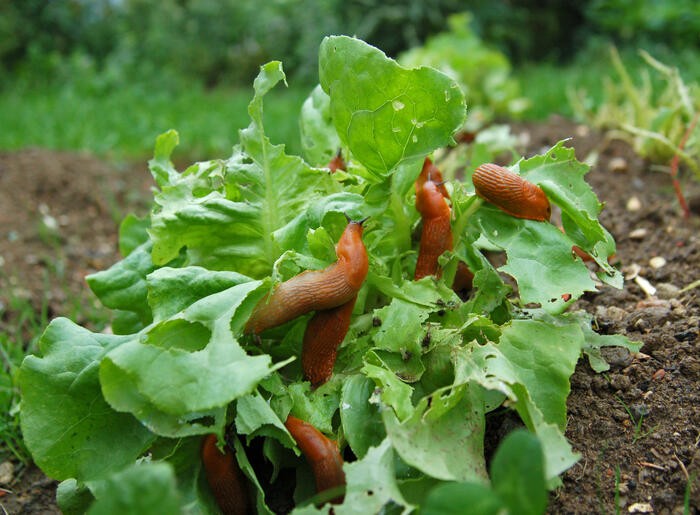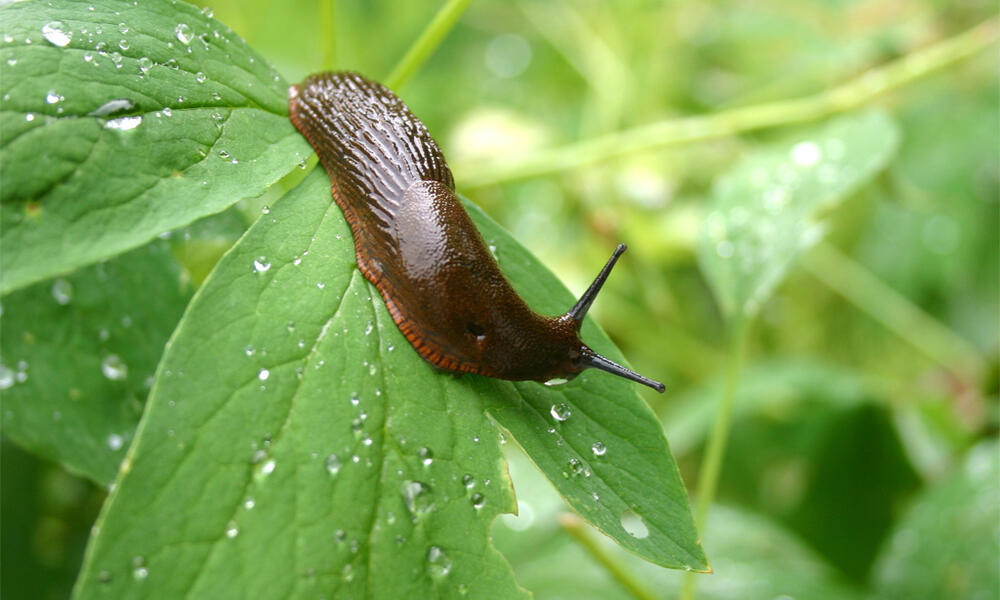Snails can be fought with various methods. Whether slug pellets, beer traps and sweeps – we show you which means there are and how you can successfully keep the slugs out of the garden.
Our kitchen garden is thriving, if it weren’t for the slugs that invade it. Slugs know no bounds and diminish the joy of the garden by eating them. Snails are gourmets and can smell what they like up to 200 meters away. Since slugs are hermaphrodites and consequently any animal can lay eggs, there is a mass appearance of slugs especially after a mild winter with a lot of precipitation in the spring.
The safest method of slug control is considered to be the application of slug pellets. However, many garden owners and pet owners wonder if they can use it safely. We’ll tell you about the potential dangers of slug pellets and reveal what other means you can use to fight slugs.
Contents
Fighting slugs with slug pellets
Slug pellets are the best means of combating slugs. The agent is particularly effective if it is used early. Because in March and April there is still comparatively little greenery, which is why the slug pellets are eaten more readily.
If you use slug pellets, however, you must strictly follow the instructions for use – especially near crops. In rainy weather, modern slug pellets retain their consistency for quite a while. Only if it has rained extensively, you need to re-spread. Slug pellets spread in the evening work better, because the animals love night feeding.

How slug pellets work
Most preparations contain metaldehyde. It increases the formation of mucus, so that the animals dry out. It alters the animals’ intestines – they stop eating and retreat to their hiding places to die. In the soil, the active ingredients are converted into the plant nutrients iron and phosphate.
Slug pellets made from iron III and iron II phosphate are considered environmentally friendly and are even approved for organic farming.
Slug pellets – danger for pets?
Slug pellets with the active ingredient ferric phosphate (for example Ferramol slug pellets) are non-toxic for all pets, birds and hedgehogs in the garden and are therefore even approved for organic cultivation. However, ferric phosphate is only effective in higher doses and must be re-spread regularly.
However, the active ingredient metaldehyde (for example Compo Schneckenkorn, Schneckenkorn Limex, Schneckenkorn Dehner) is toxic to a certain degree for domestic and wild animals, as Johannes Klockenhoff, deputy press officer of the Federal Office of Consumer Protection and Food Safety, told us. The manufacturers of metaldehyde slug pellets have therefore added bitter or other repellent substances to their product, making it unattractive to cats, hedgehogs, birds and other small animals. They do not eat it in the first place.
However, the situation is different with dogs. They are not deterred by repellent substances. “Poisonings with dogs by metaldehyde slug pellets have already occurred. As far as the backgrounds could be clarified, the animals in these cases had access to opened packages or the slug pellets were misused for deliberate poisonings,” explains Johannes Klockenhoff. “On the other hand, slug pellets scattered in accordance with regulations pose practically no risk, even for dogs, if the agent is dosed exactly according to the instructions for use and the manufacturer’s instructions not to spread the slug pellets in heaps are observed.”
Anyone who wants to be absolutely certain that pets will not be harmed should follow the recommendation of the Ministry of Consumer Protection and keep animals away from areas that have been treated with metaldehyde slug pellets.
Fighting snails – without chemicals
Many think that the more toxic the agent, the more effective the fight against snails. However, you can also achieve good results with natural methods when used consistently. Here you can read which chemical-free means can be used to control snails:
plant flowers
In the old peasant gardens, colorful blooming summer flowers sprouted in the midst of lettuce and vegetables. They not only decorated the garden, they also protected the vegetables from slugs. These include: the fragrant bearded carnation, nasturtium, man’s chaff, maidenhair, foxglove, purslane, columbine and many others. They are all charming summer flowers. Planting them among vegetables and in vulnerable flower beds, slugs are effectively kept away.

daily collecting
A tedious but effective method of combating slugs is to collect them. If you place a halved potato in the bed, this will attract the animals together and collection will be easier. Often beer traps are recommended – wrongly, because beer smells so intensively that even animals from the neighbor’s garden will make their way to you.
Snails are mainly on the move at dawn or late in the evening – at these times you will find them more easily. Take the collected animals as far away as possible: the mollusks manage up to 30 meters of distance per day. If you do kill the animals, make sure they do not suffer for long (such as salting). Instead, douse the snails with boiling water. Do not leave dead animals lying around, they attract conspecifics. It is better to bury them.
erect barriers
To protect individual beds from the snails, there are snail fences: the top edge is bent down, so that no wolverine can climb over it. The fence must close the whole bed tightly, no plant may overgrow it: Overhanging leaves would be used by the animals as a ladder. A cheaper alternative is a barrier made of sawdust – slugs cannot crawl on it. However, this protection only lasts until the next rain. To protect planters and raised beds, self-adhesive copper tape is suitable, which snails do not like to overcome.

encourage beneficial insects
Slugs also have predators: Hedgehogs, shrews and toads eat them with great relish. Ground beetles, centipedes and tiger snails eat egg clutches and young snails. Beneficial insects feel most at home in a natural garden with hiding places.


